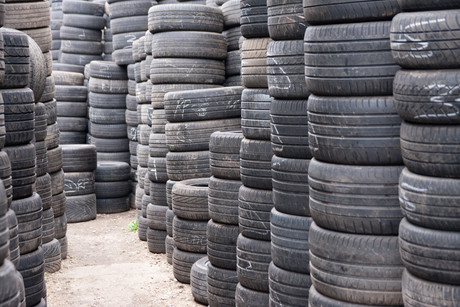Demystifying pyrolysis and gasification of waste tyres

If you’re involved in waste management, it’s likely that you’ve heard pyrolysis and gasification being touted as perfect circular economy solutions to the challenge of recycling. With high-temperature thermal processing offering the promise of environmentally sensitive recycling of old tyres, resulting in products such as oil, synthetic gas, carbon black and steel, the technology sounds almost too good to be true.
To separate fact from fiction, Tyre Stewardship Australia (TSA) initiated a study to establish both the technical capabilities of the technologies involved and the commercial considerations for funding and building of thermal processing plants. The resulting report, ‘Tyre pyrolysis and gasification technologies — a brief guide for government and industry’, reviews the efficacy of both technologies, looks at the global history of operating plants and, most importantly, considers the economic and end-product market factors that are critical to the commercial viability of such recycling technologies being deployed in the Australian market.
“The motivation of the guide was to provide industry thought leadership on both, often promoted, emerging technologies as possible recycling solutions and to better inform government, the tyre industry, pyrolysis proponents and those considering investment in such technologies,” said TSA Market Development Manager Liam O’Keefe.
“Obviously, TSA is interested in any technology that can sensitively recycle almost 100% of a waste tyre, but we must be aware of the prevailing market conditions, investment costs and competitive pressures that play a role in establishing the economic sustainability of such projects. We believe the guide, by providing a high level of consultation, analysis and technical and economic detail, will be an aid to decision-making around proposed facilities.
“No one technology will meet the waste tyre environmental challenge on its own. The best result with such immense global resource recovery and management challenges usually comes from a combination of options, offering the flexibility to adjust to future conditions and developing market demands. This document is a tool to assist decision-making by providing better information on such matters.”
To download the guide, visit www.tyrestewardship.org.au/pyrolysis-guide. A full report on thermal tyre processing technologies, from which the guide is taken, is also available from TSA on request.
Vodafone and MobileMuster team up to tackle e-waste
New figures reveal that there are more than 23 million mobile phones estimated to be sitting idle...
APCO releases plan to strengthen packaging system
The Australian Packaging Covenant Organisation has released its FY26–27 Business Plan,...
Specsavers partnership tackles optical waste
A nationwide recycling program is addressing the growing number of old prescription glasses and...










